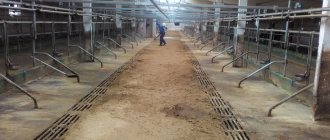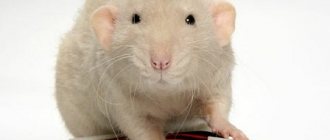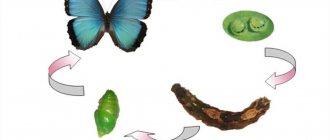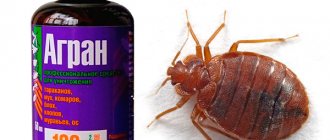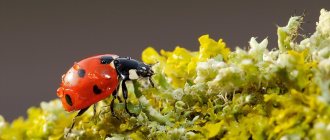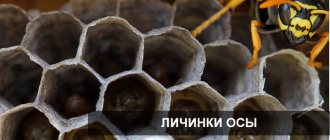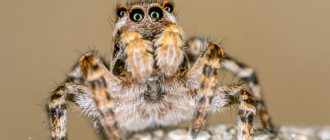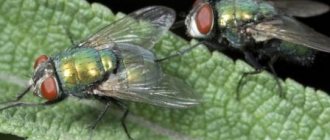Home » Articles » The procedure for disinsection and deratization
Contrary to popular belief, the extermination of insects or rodents is not a single operation, but rather a complex of measures. Depending on the type of object, work to eliminate insects or rodents may include up to several stages of chemical, biological and mechanical procedures aimed at destroying pests and pathogens of various diseases, as well as preventive measures. Carrying out disinfestation with a professional approach implies, first of all, competent planning of work and rational use of time, otherwise the timing of the activities will be greatly delayed, and this is beneficial only for insects.
What does a professional know?
Measures involving the use of poisons should begin with monitoring: one must clearly understand what pests will have to be fought and under what conditions. At the exploration stage, specialists select a set of drugs (as a rule, there are always several of them), the necessary equipment and clear boundaries of work. The exterminator must find out:
- places of clutches and accumulations of arthropods at different stages of their formation;
- density of contact between insects and people;
- insect population dynamics;
- the impact of natural and anthropogenic regulators on pest populations;
- the time frame within which the population of bedbugs or cockroaches can recover after the use of poisons.
The exterminator must know the operating principle of each group of insecticides, the rules for their use and safety precautions when working with poisons.
Features of room treatment
Sanitation specialists regularly treat premises for various purposes to prevent the proliferation of harmful insects and rodents. There are two types of disinsection and deratization:
- the first option is mandatory activities according to the schedule and SanPin. Representatives of special services treat basements and attics regardless of whether parasites/rodents live there or not. Preventive measures prevent the proliferation of fleas, cockroaches, mice, rats, bedbugs;
- the second option is an unscheduled call by residents of company representatives to destroy a large population of pests. Sometimes rats, cockroaches, and fleas actively reproduce under favorable conditions and annoy the residents of a certain apartment or the entire house (dangerous rodents or insects “spread” from the basement or attic to all floors).
Is it possible to do without calling specialists and treat the basement or attic on your own? Of course not. Only professionals will carry out disinfestation according to the rules, using toxic agents that are not always available to consumers. Independent use of special drugs by non-professionals can lead to intoxication of the body and poisoning of household members.
Arthropods as pathogens
First, a little history about pest control itself. As a term, the concept of “insect control” was first used in 1909 by Russian and later Soviet doctor Nikolai Fedorovich Gamaleya. The academician of bacteriology proposed to designate measures to destroy insects that carry infectious diseases with the term “disinsection.” This order of invertebrates is the most numerous: two-thirds of living organisms on our planet belong to this group! In relation to humans, among invertebrates there are both beneficial and harmful, those that damage crops and trees, food, furniture, clothing and homes, and also carry pathogens of various infections. Parasitic insects (bugs, mosquitoes, fleas) deprive us of sleep and peace or create unsanitary conditions in our homes (flies, cockroaches). All arthropods that cause harm to humans are objects of medical disinsection. Each insect species has its own biological characteristics and occupies a specific place in the ecological niche. Therefore, the exterminator uses a differentiated approach in his work.
What is the role of arthropods in the spread of infectious diseases?
Among arthropods there can be both beneficial specimens and pests. Most of the insects from this large order not only damage gardens, crops, food supplies, clothing, and furniture, but also carry pathogens of dangerous diseases. In addition, among arthropods there is a large group of insects that live next to humans and cause him a lot of trouble - these are bedbugs, fleas, and mosquitoes. The appearance of flies and cockroaches demonstrates that an unfavorable sanitary environment has been created in homes, offices, and workplaces.
In order to understand how to effectively deal with various types of insects, you need to know what harm they can cause to humans and what their favorite indoor habitats are:
- flies prefer places where they can feast on food waste - landfills, compost heaps, stables, barns and others. In this regard, they can become carriers of intestinal diseases, pathogens of tuberculosis, cholera, etc. In addition, with their bites they can cause a lot of trouble, both to humans and animals;
- dust mites - their favorite places in the apartment are the bed, furniture upholstery, fleecy surfaces. Their appearance in the house can cause allergic reactions in a person and can lead to serious diseases such as bronchitis and ulcers;
- cockroaches - most often live where there is high humidity and there is sufficient food waste. They cause a lot of unpleasant moments for a person. In addition to the fact that the very fact of the appearance of longhorned beetles in an apartment does not cause delight, they are also carriers of intestinal diseases, cause allergic reactions, and sometimes bite people;
- lice – live in human hair and cause pediculosis;
- fleas - in most cases they are found under baseboards, in carpet pile, and in animal fur. They painfully bite pets, and sometimes people; when bitten, they can transmit not just dangerous, but even fatal diseases, and carry helminth eggs;
- Pharaoh ants - inhabit basements, ground floors, and move along ventilation ducts. They spoil food, leave their waste in the corners of rooms, and carry pathogenic bacteria;
- bedbugs prefer to live and reproduce in human beds and all sorts of crevices. They disturb a person’s restful sleep, their bites cause severe itching, sometimes accompanied by allergic rashes, headaches, and nausea.
Due to the numerous conditions in which unwanted insect exposure occurs, different approaches to pest control procedures are required.
How infectious agents are transmitted
The scope of activity of exterminators includes eight orders of arthropods: lice, cockroaches, fleas, ants, bedbugs, ticks, flies and mosquitoes. The pathogen in the body of an insect can live and develop or only reproduce. For example, malaria pathogens grow and strengthen in the body of a mosquito. But the encephalitis virus in ticks only multiplies, like the plague bacillus in the body of a flea. Biologists call both types of such disease carriers specific. There is also a type of mechanical vectors of viruses, when the pest gets into the proboscis or on the body of an insect. In this case, infection occurs directly, through a wound on the human body or mucous membrane.
What tools do professionals use?
Disinfection against bedbugs
Previously, special services used the insecticides Karbofos, Reid, Kombat, Dichlorvos. But over a long period of time, insects have developed immunity to these poisons. The modern market provides bedbug disinfection services using more effective means. These include new professional insecticides:
- Digital;
- Sychlor;
- Fufanon;
- Sipaz is super;
- Sinuzan;
- Get;
- Tetrix;
- Xulat.
The working substance contained in them (Chlorpyrifos, Cypermethrin, Malathion) can act on the bug for a long time, and also affect the insect in the larval and egg stages. Solutions containing such substances are odorless and colorless, which means they will not harm your property.
Disinsection and its types
The destruction of insects can be preventive or focal in nature.
Preventive
disinfestation
. One of the main sets of procedures to prevent infection of people in forest areas where foci of certain infections are detected. An example is the mass killing of mosquitoes to prevent malaria.
Focal disinsection.
Divided into current and final. In the first case, insects are exterminated both at the source of infection and in the surrounding area (the boundaries of quarantine are determined by the danger of the pathogen). In the second, the areas of infection themselves are eliminated, as, for example, in the case of pathogens of relapsing or typhus. The effectiveness of these measures depends on the correct determination of the boundaries of the hazardous area and the quality of treatment.
Experience shows that proper implementation of current disinfestation completely eliminates the recurrence of typhus, malaria and even pappataci fever.
Disinfection
Disinfection is actually synonymous with the word “disinfection.” The process itself includes a number of actions - it is always an integrated approach. Typically carried out to completely clean the room of viruses or bacteria, as well as toxins, such as those produced by mold spores.
The need for disinfestation often arises during epidemics. The procedure may also be necessary after someone in the family has suffered from a serious contagious disease.
Types of disinfection procedures
There are three main types of disinfection:
- Preventive. It is carried out if there is a threat of infection and infection entering the premises directly. Most often, this procedure needs to be carried out in places with large crowds of people. Where children are constantly present, such a procedure is a necessity, even if there is no epidemic or obvious risk of infection.
- Current. It is carried out if the infection is already present in the room. Such disinfection is necessary to prevent further spread and reduce the risk of new infections.
- Final. It is carried out when all sick people have already recovered. It is needed in order to eradicate the disease by eliminating the residual number of infectious agents.
For preventive purposes, you can carry out disinfection yourself. If you follow all the rules, it will give the desired result. It is better to entrust the remaining types to specialists, since such work requires special equipment, means of destruction, as well as skills and experience.
Ways to control insects
Due to the wide variety of arthropods, their structure, habitats, and feeding and reproduction characteristics, pest controllers use three methods:
- chemical,
- physical,
- biological.
Chemical method
. Destruction of insects using chemicals - insecticides. Substances used to kill ticks are called acaricides. There is also a group of poisons used to repel arthropods - repellents.
The principle of action of any insecticide is simple: when it gets inside an insect, it causes disruption of its vital functions. All other conditions being equal, the degree of damage to the insect depends on the amount of poison it received: it can be partial defeat with subsequent restoration of viability or death.
The toxicity of the drug depends on several conditions:
- the degree of dissolution of the poison in the insect’s body;
- time of exposure to the poison (depends on the physiology of the insect and the speed of chemical reactions);
- ambient temperature.
According to the method of penetration, insecticides are divided into intestinal, contact and respiratory.
Physical method
. Involves the use of high temperatures and mechanical devices. This method includes treating the room and furniture with a vacuum cleaner or simply knocking out things. Window nets and sticky traps also belong to this method, but they play the role of complementing the effects of chemicals.
Thermal effects are based on the fact that insects do not have the ability to thermoregulate the body and are completely dependent on the environment in this regard. But each insect has its own “critical temperature” at which it falls asleep or dies. Exterminators use fire, heated water, hot air or steam.
Biological method
. Insects have pests too! These are parasites that live on the body of insects, which are used in this case. Biological effects also include the use of substances that inhibit the insect at the genetic level (inhibitors), analogues of natural hormones. Disinsection is carried out in strict accordance with the requirements of SanPiN 3.5.2.1376-03 (approved by Decree of the Chief State Sanitary Doctor of the Russian Federation dated 06/09/2003 No. 126).
According to the methods of influence, the disinfestation process is divided into:
- biological - natural enemies of insects (for example, birds) are sent to fight; the method is safe, but the success of its use depends entirely on the hunter;
- mechanical – general cleaning of surfaces, use of traps; weak effect, but safe to use.
- chemical - the use of poisons for insects, causing their death and preventing reproduction; can be used using special equipment.
- physical – destruction by exposure to extreme temperatures, i.e. freezing or steaming. Burning is effective, but is rarely used due to the danger to humans and their homes.
It is optimal to use all of these methods in combination, while delegating authority to professional exterminators who have the necessary information, equipment and poisons.
Where can disinsection be carried out?
Measures to destroy arthropod pests can only be carried out in compliance with the relevant sanitary standards and rules at facilities of any type:
- Sea vessels and inland navigation ships. Disinfection is carried out in accordance with current sanitary rules and the relevant regulatory framework for this category of transport. The vessel may be at sea.
- All types of passenger ground transport (cars, buses and trains).
- Aircraft of any type. Insecticides are used during regular cleaning, either ten to fifteen minutes before passengers are accepted or before an aircraft lands, if there are no passengers on board and the crew is specially trained.
What is deratization
Deratization (extermination of rats) is a set of measures to exterminate various types of rodents (mice, rats, voles, etc.). The deratization procedure is quite dangerous and must be carried out by a specially trained person, subject to a set of safety measures. If handled improperly, you can not only get rid of rats, but also cause irreparable harm to human health and pets.
Main types of deratization:
- Preventive deratization is a set of measures that are aimed at eliminating favorable conditions for the appearance of various types of rodents. This type of deratization includes, for example, blocking access of rodents to places suitable for making burrows or blocking access to food.
- Exterminatory deratization is measures that are taken when rodents have already appeared in a room and aimed at their complete destruction and taking measures for this.
Deratization can be carried out in different ways; usually one of the three methods of deratization listed below is used.
Main methods of deratization:
- The mechanical method is a method based on the use of various mousetraps, rat traps, traps and other traps.
- The chemical method is a method that uses various types of baits poisoned with poisons, or so-called raticides.
- Biological method is a method in which domestic animals that hunt them are used to kill rodents. This method is prohibited in enterprises.
- Gas method - this method is mainly used in field conditions and in small confined spaces - ships, cars, airplanes, etc.
© OchProsto.com
Protecting new buildings from insects
One of the most important sets of measures to prevent insect infestation is the protection of objects under construction. These methods include:
- filling with sealants the joints of interfloor ceilings and slabs, points of entry and laying of electrical cables, technical and other communications through walls, ceilings and fences.
- Autonomous ventilation device.
- Installation of non-buried waste containers.
- The use of materials in the manufacture of garbage disposals that can be constantly cleaned.
Prevention of insects
Properly organized preventive measures to prevent the infestation of premises by insects can guarantee that they will not appear and there will be no need to contact exterminators. It is enough to follow simple rules:
- Regular cleaning and treatment with insecticides in accordance with SanPiN.
- Timely repair and sealing of seams that have lost sealing.
- Equipment of basements and technical underground areas with lighting devices.
- Equipping doors with closers and seals, closing ventilation shafts with special removable grilles and covering windows with fine mesh.
- Filling floors with cement mortar and maintaining gutters and blind areas in good condition.
- Systematic cleaning of basements, ventilation and drying.
What do insects like?
Insects will settle where they are most comfortable, and driving them away from there will not be an easy task. Here is a list of places where arthropod pests will appear first:
- yard dumps for construction and household large waste;
- mountains of garbage outside the city and in open areas around the house;
- small ponds and pits (mosquito habitats);
- unkempt ponds for decorative or economic purposes (they should be cleaned of vegetation and debris);
- underground communications and mines.
Any freely available food waste (not collected in closed containers) attracts picky ants and cockroaches! Insects are also attracted to sewage products, especially stale ones.
Requirements for specialized companies
Organizations whose profile is disinfection (deratization, disinfestation) are required to have the necessary set of documentation:
- current SanPiNs"
- licenses and approvals (or their certified copies) for the insecticides and methods used when carrying out pest control work;
- individual medical records of workers who have contact with poisons (reception, storage, preparation, transportation and distribution), which are issued in accordance with relevant laws and regulations;
- instructions for personal and public safety during disinfestation (must be in a visible place).
In addition, the pest control company is required to carry out laboratory monitoring for the presence of insecticides in the air of the work area (production, warehouses, offices and surrounding areas) at least once a year.
The direction of our activity
1. Agricultural companies. 2. Public catering places. 3. Grocery stores. 4. Housing and communal conditions. 5. Warehouses. 6. Hospitals, beauty salons, sports complexes. 7. Hotels and inns. We issue sanitary work certificates. Regular clients enjoy a comprehensive package of services. A special program for disinfecting facilities has been developed in Moscow. Activities included in the contract: 1. Thorough analysis of the premises. 2. Development of an individual plan. 3. Carrying out work. 4. Issuance of certificates of completed work.
By concluding a contract for servicing your facility with us, you receive not only a set of documents required by Rospotrebnadzor (SES), but also guaranteed compliance with safety standards for all services provided.
The contract is concluded for 1 year.
Stage of preparation for disinfestation
If the necessary conditions exist, the owner, tenant of buildings or management carry out insect control treatment on their own or engage third-party specialized companies on a contractual basis. Ordinary citizens carry out disinfestation within the boundaries of their homes (buildings, houses, cottages, etc.) with preparations that are approved for use by the population in domestic conditions. Enterprise management must ensure the safety of personnel and create conditions for high-quality work by exterminators.
- A person responsible for disinfestation is appointed from among the staff.
- The serviceability of stairs, floors, ventilation and lighting is checked.
- The possibility of exterminators being damaged by electric current or steam, as well as the possibility of an attack on them by animals, domestic or stray, is excluded.
- Those carrying out disinfestation are given access to all premises of the facility, as well as to the adjacent territory and to technical inputs.
- Space is freed up for passages with a width of 70 cm along walls and stacks with loads.
- A sanitary day or wet cleaning of the premises where anti-insect treatment will take place is organized.
Disinfection methods
There are several methods of disinfection:
Mechanical. It consists of cleaning hard surfaces, disposing of contaminated objects, and removing the layer of soil with microbes. Chemical. This is the most popular method, which involves using special agents: formaldehyde, chlorhexidine, peracetic acid and other disinfectant solutions. Physical. Involves the use of ultraviolet lamps and gamma radiation, as well as heat treatment of items: boiling linen, dishes and hygiene items.
Biological.
This method is based on the use of natural enemies of pathogens, as well as agents of biological origin.
Combined.
The most effective method. It is a combination of several of the above methods.
The sequence of disinfestation measures
The work of pest control specialists always consists of a set of activities. Here are these operations in the order they take place:
- Inspection of the premises to detect the localization of insects.
- Audit check of the presence of insects, registration of their number and scale of reproduction.
- Selection of processing methods and preparation of tactics for the use of poisons.
- Carrying out engineering and pest control operations.
For food industry, trade and catering enterprises infested with insects, four treatments are carried out per month and two if there is no infestation.
Preschools, medical institutions, schools and boarding houses for the health of the younger generation are subject to disinfestation every two weeks, as are housing and communal services enterprises.
Types of pest control
There are two main types of disinfestation:
- Preventive – carried out with the aim of creating situations in which insects will not be able to exist and reproduce. This type of disinfestation is carried out in institutions for various purposes - hotels, schools, medical organizations, sanatoriums, tourist centers, catering organizations. Preventive disinfestation involves a whole range of different activities. This includes systematically changing and washing bed linen using high temperatures, conscientiously cleaning all residential and office premises, putting the surrounding areas in order, cleaning sewer channels, installing grilles on ventilation ducts, and hermetically sealing cracks and crevices. It is possible to install special boxes with an adhesive plate - bait inside. Such devices help determine the presence of insects on an object, because several individuals are sure to fall into such a trap. If such a situation occurs, then preventive disinfestation turns into exterminatory.
- Extermination - carried out on those objects where a very large number of insects live. The purpose of this type of disinsection is the complete destruction of arthropods, as well as their nests. Depending on how heavily an object is infested with insects, methods of combating them are chosen. Exterminatory disinsection consists of focal - this is the extermination of nests with eggs and larvae and the adult pests themselves, and final - this is the destruction of the hardiest, surviving members of the colony, as well as the offspring hatched from the eggs. After this, a special barrier is installed, which helps to promptly identify and, as quickly as possible, eliminate secondary contamination of the area.
Security measures
It is prohibited to use Class I toxic substances (extremely dangerous) for industrial and residential premises. In health centers and catering establishments, the use of hazard class II poisons is prohibited; in other facilities, the use of these products is permissible, but only if the exterminator is specially trained and has the necessary protective equipment. Substances of class III (moderately hazardous) can be used in buildings of any type and in everyday life, subject to mandatory dosage compliance. The requirements for exterminators remain in force: they must be trained and properly protected. The greatest efficiency is achieved by combining deratization and disinfestation: stray animals are an excellent “base” for feeding ticks and other parasites.
Prices for disinfection services
The cost of SES services varies. It can be in a fixed amount for owners of residential premises and in the price per unit of area. Prices are presented in rubles.
| Type of processing | 1 room | 2 rooms | 3 rooms | More than three rooms |
| Cold fog | 1800-2000 | 2100-2300 | 2300-2500 | 2500 or more |
| Hot fog | 4500-4700 | 4700-4900 | 4900-5100 | 5100 or more |
| Complex | 6200-6600 | 6600-6900 | 6900-7200 | 7200 or more |
| For office, industrial, agricultural premises, rubles per 1 m2 | ||||
| Up to 100 m2 | 100-200 m2 | 200-300 m2 | 500-1000 m2 | More than 1000 m2 |
*Prices in the table are approximate!
Many services have a system of discounts, for example, when destroying several types of insects, the price will be reduced by 50%. To find out the entire price list, you need to call the service and consult with specialists who will give you detailed information.
What to do after treatment
The main rule: after disinfestation, the premises must be allowed to stand for up to 12 hours, then they must be thoroughly cleaned. After three to four hours the building can be used. Cleaning is carried out with open windows or with ventilation turned on. Ventilation is provided for the period indicated in the instructions for the drug used. When cleaning, remove the poison with a damp rag or vacuum cleaner. First, the floor is processed, then the furniture and equipment. After wet cleaning, all surfaces are thoroughly washed with soap and soda (do not use washing powders). No strangers should be in the premises when cleaning.
Preparing the premises for disinfection
Before you let the technician into the room or begin the disinfection procedure yourself, you should prepare the apartment for disinfestation. To do this, you need to perform seven steps step by step.
- Clean up. Wipe the floor, surfaces, and baseboards with a damp cloth. Dust should not prevent the spread of chemicals.
- Hide food items. Place food and spices in the refrigerator or in sealed jars, boxes, and plastic containers. The same applies to personal hygiene items and cleaning products.
- Remove the change. Place all small objects - paintings, vases, dishes, toys - in thick boxes or take them out of the apartment for a while. Hide small items in a closet, provided that it is not subject to disinfestation, or cover the items with plastic wrap.
- Cover the equipment. Cover household appliances, desktop computers, telephones hermetically with film. Do the same with interior items - tables, cabinets, sofas, if you do not plan to process them.
- Open access. Depending on the pest, you may need to rearrange furniture, empty cabinets, or remove wallpaper. Exterminators must have unimpeded access to nesting and aggregation areas of arthropods.
- Bring out the animals and children. Send your household members, including turtles, parrots and fish, to stay with friends, parents, and neighbors for a while. If you cannot remove the aquarium, close it and turn off the air exchange system.
- Remove the bedding and covers. Arthropod larvae and eggs can settle in bedding and fabrics, so wash and boil your bedding in advance. When poisoning bedbugs, leave the bed or sofa unfolded.
The presence of the customer (owner) during disinfestation is allowed only in full equipment with respiratory protection. The treated apartment is left for at least 12 hours with the windows and doors closed. Afterwards, the rooms are ventilated and the work surfaces are wiped with a damp cloth. General cleaning can only be done after 14 days.
Having understood what pest control is, the owners begin to pay more attention to the maintenance of the apartment. It is better to solve the problem immediately than to turn your house into a hotel for arthropods. Uninvited “guests”, as a rule, do not appear alone and do not leave of their own free will. Therefore, you should act, and not wait for the problem to miraculously solve itself.
Video on the topic
Storage, transportation and use of poisons
Insecticides are prescribed to be stored in specialized premises, hermetically sealed and with the manufacturer's label on the container. For each poison there are regulations for its storage. It is permissible to keep means for deratization and disinfestation in one place.
The storage must be equipped with:
- supply and exhaust ventilation;
- metal racks for storing small packages, as well as wooden shelves for placing glass containers;
- security alarm system that meets fire safety requirements;
- special wall finishing that prevents the absorption of harmful substances and allows wet cleaning of the room;
- floors, walls and ceilings must have a finish that prevents the sorption of harmful or aggressive substances and allows wet cleaning and washing (tiles, oil paint, linoleum).
Storage conditions
. Poisons must be kept in a room with a temperature regime that does not allow heat above 20 ° C and below 18 degrees Celsius.
Insecticides purchased for household use should be kept out of the reach of children and pets, and kept separately from food, medicines and drinking water.
Transportation
. Insecticides are transported by special transport in closed factory containers. This does not apply to household poisons.
Attention!
It is permissible to work with poisons no longer than six hours a day with a mandatory break of one day, or no longer than four hours in a row. Exterminators should take a fifteen-minute break every 45–50 minutes of work. During the pause, it is prescribed to go out into the open air, taking off the respirator. How to properly remove and wash workwear after work is regulated by special instructions that must be strictly followed.
Actions in case of poisoning
If the insecticide gets on the skin, throat or eyes, you must consult a doctor, and until help arrives, carry out the following operations:
- Take the victim to fresh air and remove his protective clothing.
- Gently (without smearing) remove poison that gets on the skin with a cotton swab. Then treat the affected area of skin with a 5–10% solution of ammonia or 2% baking soda (can be replaced with soap emulsion).
- If the insecticide enters the body, drink several glasses of clean water or a pink solution of potassium permanganate, and then induce vomiting in the victim. Repeat the procedure two or three times. Attention! If the poisoned person is unconscious or experiencing convulsions, it is prohibited to induce vomiting!
